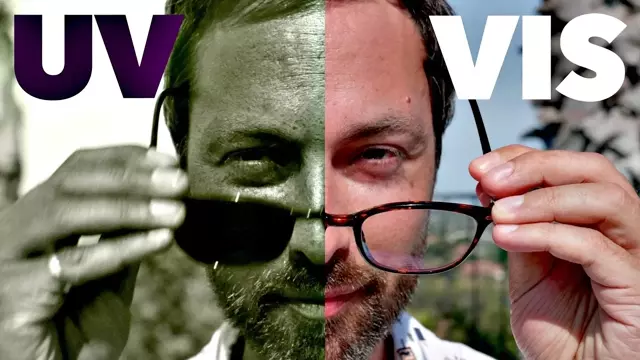2018-07-21
[public] 3.72M views, 163K likes, 1.30K dislikes audio only
UV cameras expose a hidden world and reveal the incompleteness of our perception
The Physics Girl looks at sunscreen: https://youtu.be/GRD-xvlhGMc
How to make sunscreen from scratch: https://youtu.be/lMXAY5F28L0
In summary, ultraviolet light interacts differently with matter for a number of reasons:
1. Some pigments selectively absorb UV so they may appear white in the visible but dark in the UV. The pigments usually dissipate the UV energy as heat, though the breaking of bonds can also occur.
2. Fluorescent molecules absorb UV light and re-radiate that energy as visible light. This makes them look dark in the UV but glowing under black light.
3. Ultraviolet light scatters more than visible light because the wavelength is shorter and Raleigh scattering is proportional to the reciprocal of wavelength to the power of four.
Special thanks to HHMI BioInteractive for their awesome animations of melanocytes and how the melanin in melanosomes protect your DNA. To see the full video explaining how we get our skin color, check out: https://www.youtube.com/watch?v=VC0TL_lYLm8
Special thanks to Patreon supporters:
Donal Botkin, Michael Krugman, Jeff Straathof, Zach Mueller, Ron Neal, Nathan Hansen, Yildiz Kabaran, Terrance Snow, Stan Presolski
References:
Overview of main UV effects:
Visualizing Rayleigh Scattering through UV Photography
https://journals.ametsoc.org/doi/pdf/10.1175/BAMS-D-14-00260.1
Arctic animals are photographed in the UV to increase visibility and get an accurate count:
Lavigne, D. (1976). Counting Harp Seals with ultra-violet photography. Polar Record, 18(114), 269-277. doi:10.1017/S0032247400000310
Absorption spectrum of melanin: http://www.cl.cam.ac.uk/~jgd1000/melanin.html
"The spectroscopy of human melanin pigmentation," by N. Kollias. In: Melanin: Its Role in Human Photoprotection, pp. 31 - 38. Valdenmar Publishing Co. (1995).
"Optical properties of human sclera, and their consequences for transscleral laser applications," by A. Vogel, C. Dlugos, and R. Nuffer, Lasers in Surgery and Medicine 11(4), pp. 331 - 340 (1991).
"The incidence and time-course of latanoprost-induced iridial pigmentation as a function of eye color," by P. Wistrand, J. Stjernschantz, and K. Olsson, Survey of Ophthalmology 41(S2), pp. S129 - S138 (1997).
Music by Epidemic Sound: https://www.epidemicsound.com "Spring Moods 5"
/youtube/video/ZQ--scjcAZ4
youtube.com/watch?v=VC0TL_lYLm8
/youtube/video/V9K6gjR07Po?t=214.81
/youtube/video/V9K6gjR07Po?t=395.98001
/youtube/video/V9K6gjR07Po?t=506.70001
/youtube/video/V9K6gjR07Po?t=538.67999
/youtube/video/V9K6gjR07Po?t=566.51001
youtube.com/watch?v=GRD-xvlhGMc
/youtube/channel/UCHnyfMqiRRG1u-2MsSQLbXA
/youtube/video/rmxh8Nty_eo

